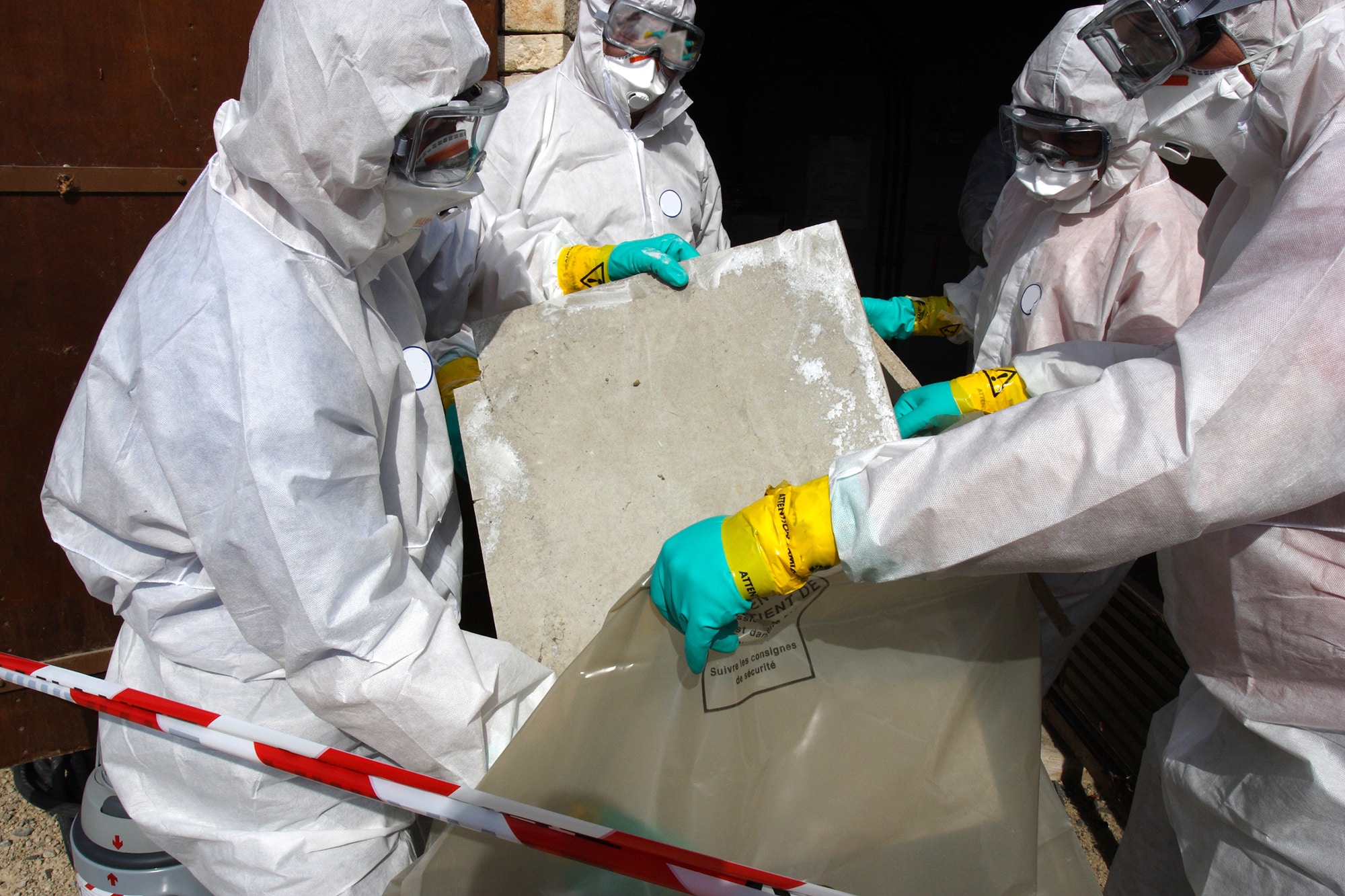Home improvement is a big business across the United States. From 2017 to 2019, Americans spent $522 billion on home improvements and undertook an estimated 115 million projects, according to the U.S. Census Bureau’s American Housing Survey.
When taking on these projects, there are many unknowns that homeowners have to be prepared for, including additional costs and surprises due to damage that couldn’t be seen until the renovation work began. Examples include damage to the home’s structure, defective or unpermitted work done in the past, the discovery of old knob and tube wiring, or even rotted drywall.
Perhaps one of the worst unforeseen surprises, however, is the discovery that your house contains asbestos, a toxic mineral that before the 1980s was used in a wide range of materials to help fireproof them.
In homes and other buildings, this material was used in insulation, vinyl floor tiles and the glue that attaches floor tiles to concrete or word, linoleum, roofing material, corrugated heavy-duty panels, window caulking and glazing, plaster, some forms of paint, siding material and HVAC duct insulation, amongst other items.
Could My House Have Asbestos?
If your house was built before 1980, it could contain asbestos. However, if your home is newer than that, then it is not likely it will contain the toxic material.
If you suspect your house may contain asbestos, the first step is to have a professional inspection completed by an industrial hygiene firm. This process will include a complete visual examination and the collection and testing of samples. If asbestos is found, the inspector will identify where it was found and provide recommendations for your next steps, which typically include removal by an asbestos abatement contractor.
These contractors will remove or seal away the material, making your house safe to inhabit again for you and your family.
Risks of Asbestos Exposure
If you are exposed to asbestos in your home or via another method, it could pose a major risk to your health, according to the Mesothelioma Cancer Network. The biggest risk is the development of mesothelioma, an aggressive form of cancer that as of yet has no cure.
Mesothelioma is diagnosed in 3,000 people each year and is responsible for the death of just as many each year. The prognosis for the disease is often devastating, leaving patients with just one or two years to live.
If you find yourself diagnosed with mesothelioma because of asbestos exposure, the best thing you can do, after receiving medical treatment, is find an experienced attorney who can advise you on your rights for filing a claim to receive compensation that will cover the cost of your medical bills and help to ensure that your family is taken care of, should you pass away from the disease.

